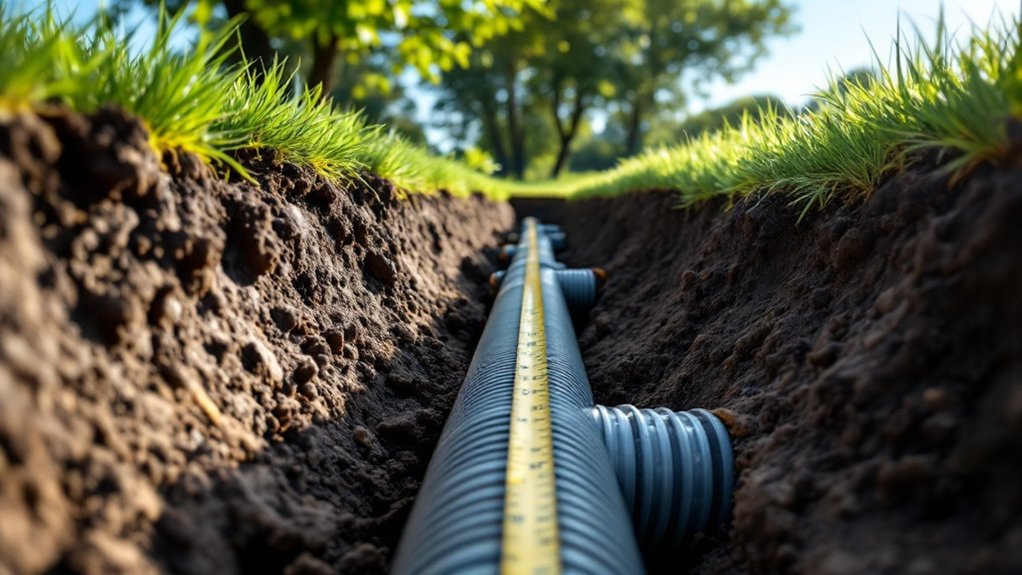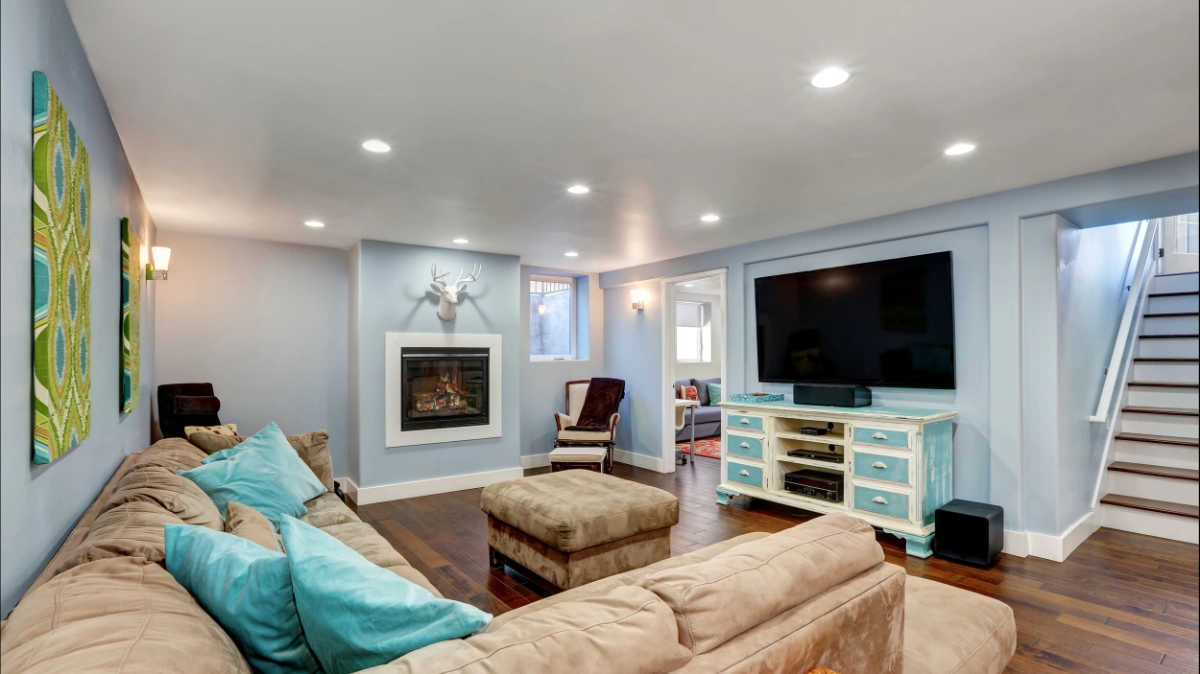Bury your gutter drainage pipes at least 12-24 inches deep, with northern regions requiring depths of up to 4 feet to prevent freeze damage. Your local frost line should determine minimum depth, while soil composition and traffic patterns may necessitate deeper installation. Maintain a proper slope of ¼ inch per foot (2%) for efficient water flow. Use sand or gravel bedding and compact backfill in layers for stability. Proper installation depth guarantees long-term performance and prevents costly future repairs.
Key Takeaways
- Bury gutter drainage pipes at least 12 inches deep, and below the local frost line in colder regions.
- For northern regions, install pipes 4 feet deep to prevent freeze damage during winter months.
- High-traffic areas require 24-36 inches of coverage to prevent damage from surface loads.
- Maintain a minimum slope of 1/4 inch per foot (2%) for proper water flow away from foundations.
- Use sand or gravel bedding beneath pipes and compact backfill in layers to prevent future settling.
Minimum Depth Requirements for Different Climate Zones

While the installation of gutter drainage pipes may seem straightforward, their burial depth varies considerably based on your geographic location and local climate conditions.
Region-specific guidelines dictate minimal burial depths to guarantee system longevity and functionality.
In southern zones, you’ll need only 3-6 inches of coverage, whereas northern regions require at least 4 feet to prevent freeze damage.
Coastal areas demand deeper water drainage installation to manage high moisture and prevent erosion.
Mountainous terrain necessitates adaptable depths based on elevation and slope conditions.
Agricultural zones typically require 3-4 foot depths for effective water table management.
Climate impact directly determines these requirements to protect your drainage investment. Understanding stormwater management is crucial for selecting the appropriate depth and ensuring optimal performance of your drainage system.
Factors That Determine Optimal Burial Depth

Five critical factors influence the ideal burial depth for gutter drainage pipes, extending beyond basic climate considerations into site-specific engineering requirements.
Your soil’s composition directly impacts pipe stability; clay exerts higher lateral pressure than sand, often requiring deeper placement.
Soil stability also affects compaction quality, which distributes surface loads. Traffic intensity demands greater depth protection—24-36 inches for high-traffic areas.
Pipe flexibility matters; PVC with higher stiffness ratings can be installed shallower than less rigid materials.
Additionally, maintaining proper slope (1 inch per 10 feet) guarantees efficient water flow while accommodating your property’s unique drainage topography.
Protecting Pipes From Frost Damage and Traffic

Proper burial depth provides the foundation for pipe protection, but specific strategies must address the twin threats of frost damage and traffic pressure.
For frost protection, bury pipes at least 12 inches deep—ideally below your local frost line—and consider wrapping them with heat tape in severe climates.
To mitigate traffic impact, use durable pipe materials and add a generous layer of gravel backfill to distribute weight loads.
Cover the gravel with landscape fabric to prevent erosion and soil infiltration.
Maintain proper slope throughout the drainage system to prevent water pooling that can lead to freezing and subsequent pipe damage.
Calculating the Proper Slope for Effective Drainage
Ensuring your gutter drainage pipe has the correct slope represents a critical factor in the system’s long-term performance and functionality. For ideal drainage efficiency, maintain a minimum slope of 1/4 inch per foot (approximately 2%).
Calculate this using the formula: Height difference = Pipe length × Slope per foot.
For typical gutter installations, aim for a 1/2 inch drop per 10 feet of pipe (about 0.5% slope). Use a string or laser level during installation to verify consistent slope throughout the run.
Avoid slopes that are too steep or too shallow, as either extreme compromises drainage efficiency.
Best Installation Practices for Long-Term Performance
With the slope calculations established, successful gutter drainage depends heavily on proper installation depth and techniques. You’ll need to bury pipes below the frost line—typically 18-24 inches deep in most regions—to prevent freezing and subsequent damage to your drainage system.
| Installation Component | Best Practice | Key Benefit |
|---|---|---|
| Trench Preparation | Use sand/gravel bedding | Prevents settlement |
| Pipe Material | PVC or corrugated polyethylene | Durability and flow efficiency |
| Backfilling | Compact in layers | Eliminates future settling |
Select quality drainage materials and employ proper installation techniques including watertight joints and protective warning tape. Avoid routing pipes under structures where crushing might occur.




